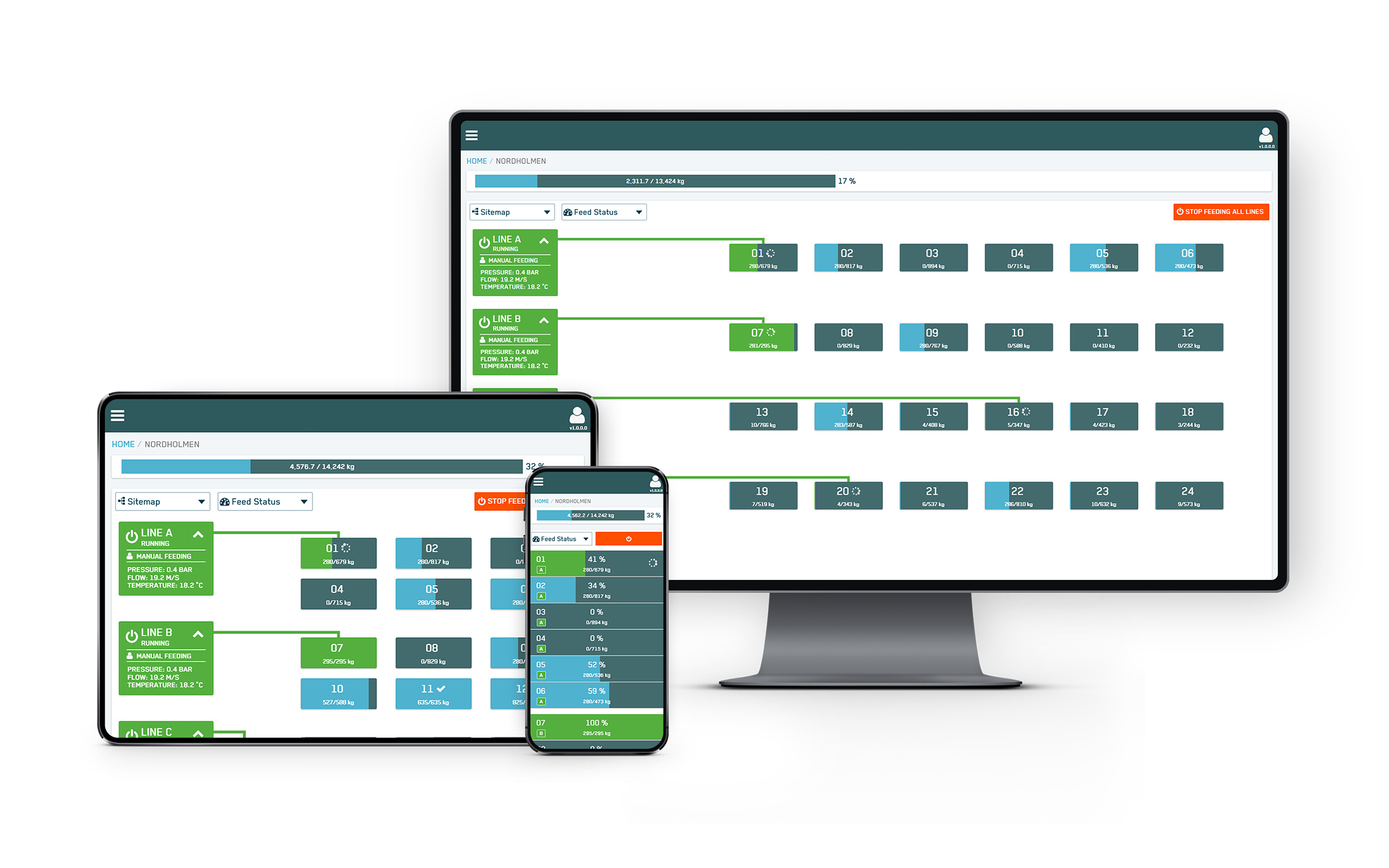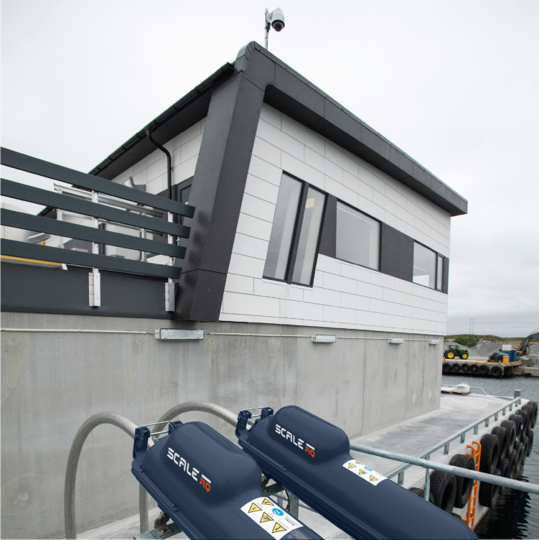Allows for innovation and information exchange. Enables more accurate feeding, says Lingalaks.
ScaleAQ, one of the aquaculture industry’s largest suppliers, is releasing the latest version of the software for the world’s most commonly used central feeding system, FeedStation 2.0.
Aquaculture is characterized by proprietary systems
According to the company, this is more than a system launch. This is the start of a new collaborative arena in the aquaculture world. The aquaculture industry has been and is unfortunately still characterized by proprietary solutions.
Over the years, several small and large companies have supplied various software and management systems for mechanical equipment to aquaculture companies globally. Unfortunately, it has also been the case that the software is not designed for information exchange. If you previously bought a camera from Steinsvik, you could only use Steinsvik’s own software to access the built-in environmental sensors. The same applies to other companies’ sensor solutions or feeding systems.
The three experienced companies within ScaleAQ are now working together towards a goal to solve industry challenges through innovation. With the launch of FeedStation 2.0, they prove that they are taking feedback from small and large aquaculture companies seriously.
In ScaleAQ’s close dialogue with almost every part of the aquaculture industry, they have seen that closed systems give less choice. They had to ask themselves the question; why is it that the same software can’t work with all types of central feeding systems?
Experience from ScaleAQ’s local presence in 11 countries shows that there are major challenges related to the collection and analysis of data across locations or regions. This has also become very evident with the rise of centralized feeding from land.
ScaleAQ opens up
Over the past year, ScaleAQ have been working on introducing open APIs that can be used for the entire industry and provide a secure and stable exchange of data between different systems. They believe so strongly that this is the right direction for the industry that they want to share their APIs with everyone who wants access.
In the short term, this means that they also have to let competitors more easily control their own mechanical systems, but they are sure that aquaculture users see the value of this.
In the future, suppliers will be chosen based on how flexible and secure their solutions are for data exchange, which thus opens the doors to entirely new areas of cooperation.
What is an API?
An application programming interface (API) is an interface in a software that allows specific parts of it to be accessed (“run”) from another software. This means that even very simple applications (often web applications, apps) can make changes, run processes or otherwise process data from other systems in a larger context.
Enables innovation from the sea site and from the boardroom
The launch of FeedStation 2.0 allows anyone who has the expertise to develop additional functionality to ScaleAQ’s renowned central feeding system.
Every day, the employees of ScaleAQ meet many smart people in the industry, and they have realized that the good ideas do not necessarily always come from the supplier side.
If Rita, who works as a farmer at a sea site, develops a solution that calculates the number of kilos of feed in a silo using an image on her phone, she can use this API to add this feature to FeedStation. Then she will automatically have access to a large existing customer group who also might think this is a good idea. Maybe they are also willing to pay for her solution.
The same will apply to existing suppliers and development teams of aquaculture companies who want their own custom solutions.

FeedStation 2.0 works on multiple devices
Available today
FeedStation 2.0 is already operational with some of ScaleAQ’s customers, and they promise that those who want access to the robust APIs can already contact the company today for access.
They are looking forward to seeing what ideas the industry has and not least being able to encourage feed innovation for everyone in the industry. The opportunities are only limited by the imagination.
Security safeguards the customer’s data
or ScaleAQ, it has been crucial to offer robust interfaces that are safe to use. This applies both to system integrity and stable operation, but also that the customer’s data is not lost.
When opening solutions for third-party integration, there is always a risk that systems may be compromised, even unintentionally. ScaleAQ considered this risk when developing the APIs, by both validating and logging all commands that are executed.
Additionally, ScaleAQ offer modern authentication mechanisms based on open industry standards. This ensures that access to the API and data is always protected while facilitating system compatibility and integration.
More accurate feeding for Lingalaks
Norwegian farming company Lingalaks has been one of the pilot users of the new FeedStation and has integrated the feeding system with hydroacoustic solutions from PenEye to measure the fish’s response during feeding.
– It is important for us in Lingalaks that information can flow from system to system, so that we can use the technology we want to feed on the fish’s own terms. The fact that ScaleAQ has developed both content API’s and control API’s makes it easier for us to connect the technologies we want to achieve the best possible feeding result, says Kristian Botnen, CEO of Lingalaks.
– We feel that ScaleAQ takes a huge leap in lifting the industry when it comes to providing modern, robust and user-friendly interfaces for data integration and sharing. We are also looking forward to using ScaleAQ’s API to send control signals to FeedStation directly from our own autonomous Echofeeding solution, says Bendik Søvegjarto, CEO of PenEye.
